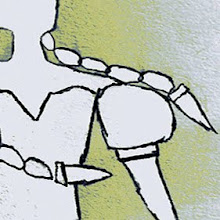(1901)
Arthur Heming (1870–1940) was a Canadian traveller, hunter, illustrator, author and painter. He was known as the chronicler of the North for his paintings, sketches, essays and books about Canada's North.
In a 1940 article on Heming in The Beaver, W.J. Phillips, a respected Canadian artist, quoted a profile on Heming from the art magazine The Connoisseur.
"Through his activities as traveller, hunter, illustrator, author and painter, he has acquired an international reputation. He possesses an astonishing vigorous style, the more unique because it owes nothing to any classified school or tradition, He revels in the dramatic incidents of field and forest, interpreting them in boldly emphasized patterns and in sweeping and strongly marked rhythms-the sense of which doubtless came to him through his observations of the movement of wild things against the northern background of snow and crystal-clear air."
In a 1940 article on Heming in The Beaver, W.J. Phillips, a respected Canadian artist, quoted a profile on Heming from the art magazine The Connoisseur.
"Through his activities as traveller, hunter, illustrator, author and painter, he has acquired an international reputation. He possesses an astonishing vigorous style, the more unique because it owes nothing to any classified school or tradition, He revels in the dramatic incidents of field and forest, interpreting them in boldly emphasized patterns and in sweeping and strongly marked rhythms-the sense of which doubtless came to him through his observations of the movement of wild things against the northern background of snow and crystal-clear air."
Source: Canoe.ca
Evening Pipes
“About once every hour the voyageurs in the great freight canoes were allowed time out from paddling to pack and light their short clay pipes. For the French canoemen, the breaks became known as pipes and they were so regular that distances were recalled as trois pipes or sept pipes. The tranquil scene is a retrospective painting by Arthur Heming, who traveled with the last of the fur brigades.”
Source: Beaver Bark Canoes
(1897)
(1919)
(1925)
(1938)









